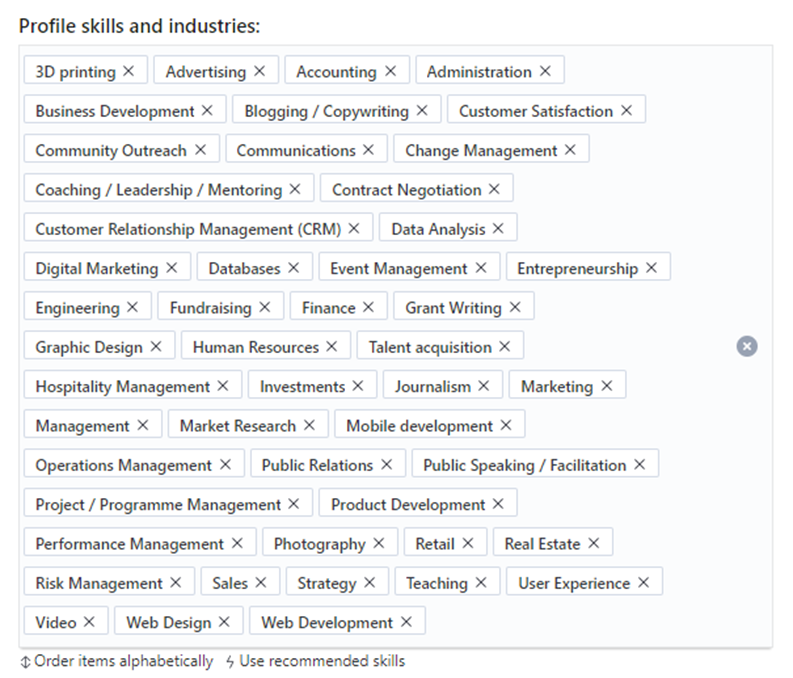The Future of Coworking Spaces: 5 Essential Trends to Watch in 2025
The rise of hybrid working is having a profound effect on coworking spaces, with traditional office leases no longer the norm for organisations looking for space.
Corporates and startups alike are attracted by their balance of professionalism and community, home comforts and top-level business facilities.
Everyone who works in or adjacent to the coworking industry knows that it’s always evolving. So, as we head towards the end of another action-packed year, let’s take a look at some of the key coworking trends in store for 2025.
1. Bookending the week with incentives
With the hybrid trend - can we even call it that anymore(?) - in full swing, coworking spaces will conjure up even more inventive ways to incentivise people into their spaces on Mondays and Fridays. These days are usually the quieter ones, with many companies still opting for the TWT (Tue-Wed-Thur) pattern.
Incentives are certainly nothing new, but 2025 will be the year coworking spaces harness AI to help out. At Nexudus, we’ve been working on a new AI suite that enables coworking managers to make more informed decisions about discounts.
For instance, users can use Resource Demand combined with dynamic pricing to provide a discounted rate automatically on those quieter days.
What is dynamic pricing?
Lots of industries already use dynamic pricing, including hospitality, transportation, entertainment and retail.
Our dynamic pricing tool enables you to automatically change your pricing in relation to information stored in our Trends feature. Essentially, it lets you increase or decrease pricing depending on customer demand.
Naturally, there are lots of other, arguably more creative ways to bring people into the office on Mondays and Fridays. Simply providing a free breakfast on a Monday morning can work wonders, especially if it’s paired with something motivational.
For Fridays, try a weekly wind-down, where members can share their ideas, experiences and challenges from the week over a drink or game in a chilled setting.
2. The rise of retreat spaces
Working from home helps many of us to work in a more focused way, free of distractions - and step out for a breath of fresh air without feeling judged. In short, we can retreat into a different environment whenever we feel like it.
With this in mind, coworking spaces are building ‘retreat’ spaces into their buildings for members who want some time to reflect and recharge. Retreat spaces provide a sense of safety and comfort away from the hubbub of the collaborative work areas.
A retreat space can take the form of a small section of a floor that is furnished in a softer way to the rest of the space, with cosy chairs and plants. It could also be a library space with books donated by members. Whatever shape the retreat space takes, attention must always be paid to the acoustics and lighting.
Retreat areas we expect to see more of (or optimised versions of) in 2025:
- Meditation rooms or wellness rooms
- Phone booths or focus pods
- Quiet zones or silent work areas
- Nap rooms or rest pods
- Retreat, prayer or reflection rooms
- Library-style areas
- Outdoor retreat spaces
- Soundproof hubs or cubicles
- Sensory rooms
3. Optimising lounge and breakout space
Office space is becoming more democratised, at least in terms of floor space, and we expect this trend to continue well into 2025 and beyond.
In 2024, WeWork released an interesting report focusing on Global Office Trends.
It discovered that collaborative areas like lounge space rose from 12% of total floor space pre-pandemic to 19.3% in 2023, with many businesses choosing to repurpose their executive offices into lounge, meeting or coworking space.
Modular furniture and ‘zoning’ enable coworking operators to optimise and adapt easily. Modular sofas, moveable tables and lightweight chairs can help reconfigure a space at short notice to accommodate different activities and group sizes.
Of course, we all know that breakout spaces - especially open plan ones - can be noisy, leading to sensory overload and stress. Part of your breakout optimisation strategy in 2025 could be the implementation of soundproof panels and acoustic dividers to finally get a handle on excess sound.
Even simple things like rugs can make a difference by absorbing some of the sound (the thicker the rug, the better the absorption).
4. Strategic skills sharing
Ever since coworking spaces began they’ve brought people together to form ecosystems where resources and ideas can be shared. Networking is still one of the key selling points, and it’s why coworking is proving so popular with big brands too.
Moving into 2025, we expect coworking spaces’ approach to skills sharing to become more structured and strategic.
If you’re a Nexudus user, 2025 could be the year that you really dig deep into the Members Directory. This is the part of the Members Portal that lets your members search through the profiles of other members in the space.
Members can add Skills Tags to their profile to give it that strategic edge.

These tags let directory members find other users with complementary skills, or search for a skill that they’re lacking or looking for. Nexudus provides a range of skill tags by default, and members can add their own too.
5. Enhanced visitor management
Visitors are a valuable - but sometimes overlooked - asset to coworking. As coworking spaces become more popular, more visitors are expected to step through their doors.
That’s more eyes on your brand and more potential future members. To give some perspective, Nexudus processes nearly 100,000 visitor interactions every month.
First impressions count, and while face-to-face greetings are certainly here to stay, technology will enhance the visitor management process for both visitors and workspace managers. Will 2025 be the year that coworking spaces take visitor management to the next level through NexIO, Nexudus’s visitor management tool?
Visitors can use NexIO to check into a space using a QR code or pin received via email. It’s a quick and hand’s free way of facilitating a check-in. They can register when they arrive and notify their host directly. They can even use the new VOIP support feature to call their host directly through the Nexudus app.
There are lots of ‘hidden’ ways to make the most of visitor footfall in 2025.
Through the insights gathered via your Nexudus CRM, you can keep track of your busiest times for visitors and even create a newsletter subscriber list specifically aimed at visitors who ‘opt in’ to communications. It’s time to get creative!
Related stories
Global Coworking Trends and Opportunities for 2025
Now well into 2025, the coworking industry continues to demonstrate strong momentum. With demand for coworking spaces remaining steady around the globe, it's clear that coworking is not just enduring—it's thriving. Let’s explore the major trends and opportunities shaping the global coworking landscape this year.
Creating Events that Drive Community Engagement in Coworking Spaces
Community is everything in coworking, but a genuine sense of connection between members doesn’t magically happen overnight or by chance. Often, meaningful relationships take intentionality, effort, and time to build, with events being an effective vehicle for bringing people together around shared interests, goals, and experiences, creating opportunities for collaboration, and a thriving coworking culture. This article looks at creating events that drive community engagement in coworking spaces.
Liz Elam: ‘Community is the number one amenity in coworking spaces’
A household name in the global coworking industry, Liz Elam, is the founder of one of the world’s best coworking event series: GCUC. Liz’s coworking roots began in 2010, when she established Link Coworking – a welcoming, affordable, and professional coworking space – in her hometown of Austin, Texas. Link Coworking achieved incredible success, expanding across three locations and becoming the fourth-largest coworking brand in Austin. It was sold in 2019, making Liz the first woman globally to exit a coworking brand.
Key Takeaways from the Coworking Alliance Summit 2025
Gathering online for the Coworking Alliance Summit last week, members of global coworking alliances, coworking spaces, and community leaders came together to navigate global issues, strengthen ties across the coworking industry, and work collectively towards future goals.
5 Ways to Reduce Noise in Open Offices & Coworking Spaces
Some people like working against a background of noise, while for others it’s their worst work nightmare. The truth is, our relationship with noise depends on our own preferences and the nature of our work.
ViDA Compliance Guide: 8 Essential Steps for Coworking Spaces in the EU
Now that 2025 has arrived, the European Union's VAT in the Digital Age (ViDA) initiative is becoming a key topic for coworking spaces operating in the EU. But don’t panic—ViDA will be introduced gradually, with key changes taking effect from 2028. This major VAT reform aims to modernize tax reporting, combat fraud, and streamline compliance through mandatory e-invoicing and real-time digital VAT reporting for certain transactions.
Key takeaways from the Workspace Design Show 2025
London’s Workspace Design Show is undoubtedly one of the best coworking events of 2025. For one, the exhibition (held at Islington’s Business Design Centre) features a host of innovative and creative workspace design solutions tailored to the needs of modern workplaces.
Harnessing AI to Help Coworking Operators Understand Their Communities Better
After more than twelve years in the coworking industry, we’ve seen the movement evolve at an incredible pace, especially in recent years. Spaces have grown larger, making it harder for operators to truly connect with their communities. At the same time, expectations for higher service standards and increasing competition mean that creating tailored experiences and fostering long-term member engagement is more important than ever.
What Is Workplace Management and Why Does It Matter?
There has always been a need for workplace management – the process of organising and optimising physical spaces, resources, and operations to support people’s needs. But, as 28% of UK working adults were reported to work in a hybrid capacity last autumn (by the Office for National Statistics), the question of ‘why workplace management matters’ is more critical than ever. Let’s look at the workplace management benefits for your operations.
10 Smart Goals for your Coworking Space: How to Set & Achieve Business Objectives
Coworking is synonymous with creativity, collaboration and productivity. Businesses and freelancers love coworking spaces because (by surrounding themselves with fellow workers) they’re more likely to achieve their goals. The coworking environment, while social, is set up to facilitate focused, distraction-free working.

